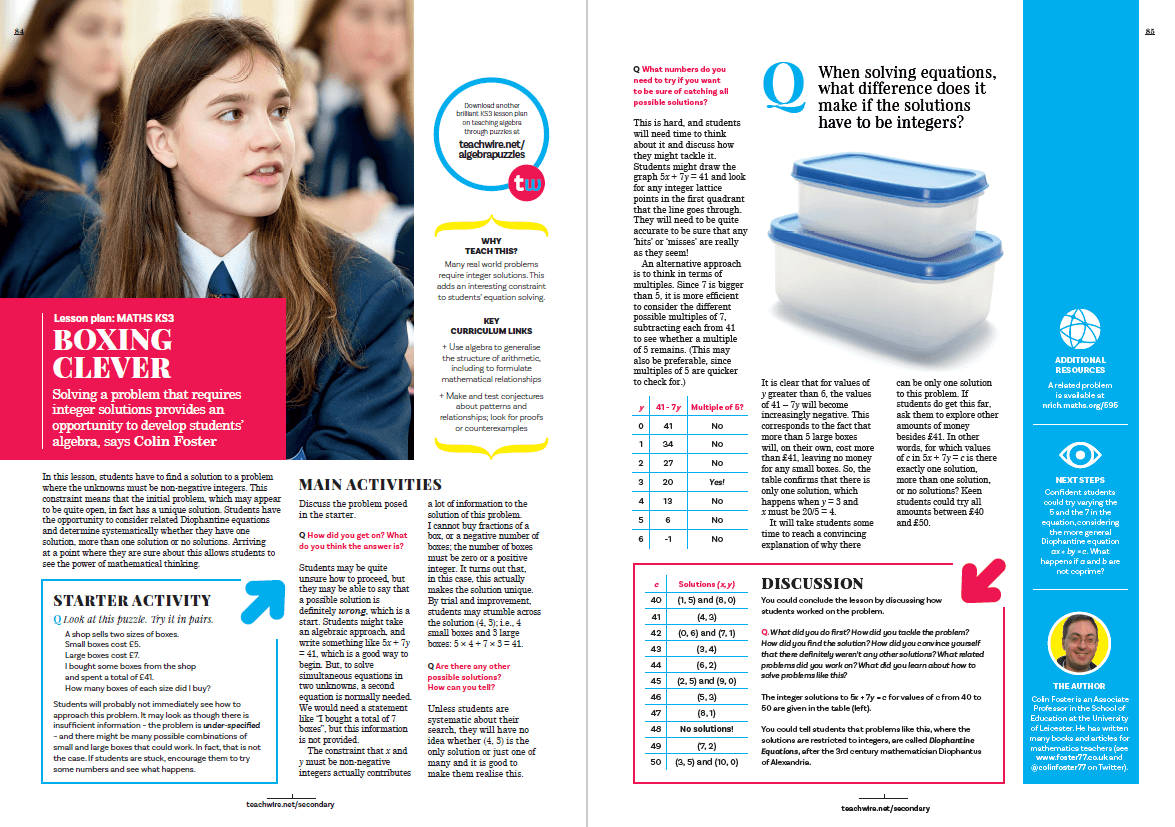In this lesson, students have to find a solution to a problem where the unknowns must be non-negative integers. This constraint means that the initial problem, which may appear to be quite open, in fact has a unique solution.
Students have the opportunity to consider related Diophantine equations and determine systematically whether they have one solution, more than one solution or no solutions.
Arriving at a point where they are sure about this allows students to see the power of mathematical thinking.
Why teach this?
Many real-world problems require integer solutions. This adds an interesting constraint to students’ equation solving.
Key curriculum links
- Use algebra to generalise the structure of arithmetic, including to formulate mathematical relationships
- Make and test conjectures about patterns and relationships; look for proofs or counterexamples
Browse more KS3 algebra resources.













